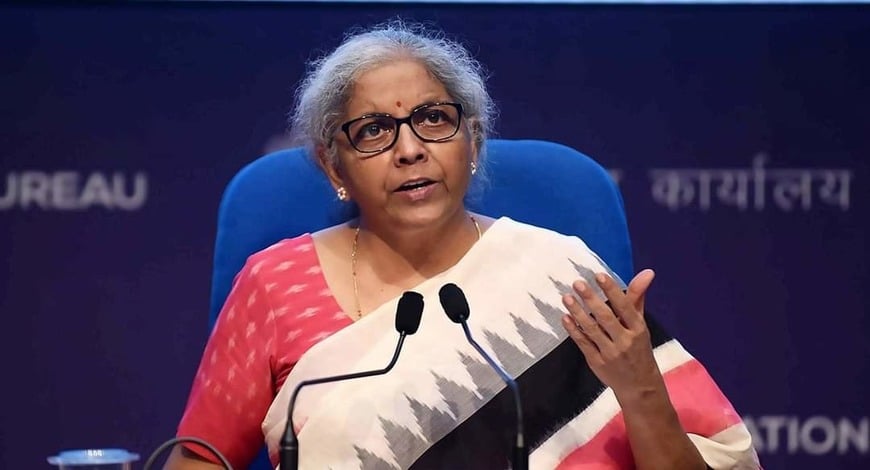In today’s rapidly evolving business landscape, entrepreneurship has taken on new dimensions, driven by technological advancements and a globalised economy. Modern entrepreneurs are required to not only innovate but also adapt swiftly to market changes, navigate the complexities of digital transformation, and lead with a vision that transcends traditional business models. This dynamic environment calls for leaders who are not only forward-thinking but also possess the resilience and strategic acumen to turn challenges into opportunities. One of such leaders is Vineet Bajpai, Founder & CEO of Magnon Group.
Vineet stands as a formidable force in the realm of entrepreneurship, combining visionary zeal with pragmatic business acumen. Over the past two decades, Vineet has consistently demonstrated an extraordinary ability to identify market gaps, innovate solutions, and build businesses that not only thrive but also set industry benchmarks. He is one of the most successful CEOs of the A&M industry, a celebrated entrepreneur, and among the top selling authors in the country today. At 36, he became the youngest-ever CEO of a multinational advertising agency as the Group CEO of TBWA\India. As Founder of the Magnon Group, he has built one of India’s largest advertising group from grounds-up.
Early Career and Founding Magnon
Vineet’s entrepreneurial journey began at the cusp of the new millennium. A graduate in commerce and passionate about technology, he started a web agency ‘Magnon Solutions’ in the year 2000. Under his leadership, Magnon grew exponentially, transforming from a small startup into a key player in the digital marketing space. His strategic foresight was evident in the company’s expansion, which included an acquisition by Omnicom Group, one of the world’s largest media conglomerates. This move not only marked a significant milestone for Magnon but also positioned it on the global stage.
Today, Magnon Group comprises of three distinct, award-winning agencies, namely- Magnon eg+, Magnon Designory, and Magnon Sancus, and is counted as one of India’s largest and most respected media & advertising groups. The group has nearly 400 professionals across Delhi, Mumbai, Bengaluru, and Hyderabad and its clientele includes several Fortune Global 500 brands. Magnon integrates service verticals like advertising, production, digital, language services, media, and content-marketing into pillars of a new-age agency, delivering world-class marketing solutions to Indian and global clients.
Talentrack and Beyond
Never the one to rest on his laurels, Vineet founded Talentrack in 2015, a pioneering online marketplace that connects talent with opportunities in the media and entertainment industry. Talentrack quickly gained traction, leveraging Vineet’s knack for blending technology with industry needs. The platform democratized access to opportunities for artists, creators, and technicians, reflecting Vineet’s commitment to fostering talent and innovation. Today, the platform hosts more than 5,00,000 artists and 20,000 recruiters across the industry. It is one of the fastest growing online hiring and content crowd sourcing platforms which has proved to be an ally to the advertising industry. Apart from launching Talentrack to solve the problem and chaos of a scattered talent market in India, he has taken several other initiatives in this direction.
Author and Thought Leader: The Journey of Penmanship
In addition to his entrepreneurial endeavors, Vineet is a celebrated author. His books, including “Build From Scratch,” “The Street to the Highway,” and the “The 30 Something CEO”, have garnered acclaim for their insightful take on business and leadership. These works highlight his multifaceted persona, seamlessly integrating his experiences as an entrepreneur with his literary craft.
Strategic Vision and Leadership
Vineet Bajpai’s leadership style is characterized by a relentless pursuit of excellence and an unwavering focus on launching growth initiatives. His ability to anticipate market trends and adapt to changing environments has been a cornerstone of his success. Whether it’s through organic growth or strategic acquisitions, Vineet has consistently demonstrated an ability to scale businesses while maintaining a strong organizational culture.
Awards and Recognition
Vineet’s contributions to the business world have been widely recognized. With sheer resilience and foresightedness, Vineet has emerged as one of the leading media-tech entrepreneurs and has won many entrepreneurship and corporate excellence awards, including the Asia Pacific Entrepreneurship Award 2013, the CNBC MercedesBenz Young Turks Award 2014, and the Entrepreneur of the Year Award 2016. Business World listed him among the 100 Most Influential People in India’s Digital Ecosystem. He has been appreciated for his work by Forbes and Times of India.
Vineet Bajpai’s journey is a testament to the power of vision, innovation, and leadership. From building successful enterprises to authoring influential books, his contributions span multiple domains, each marked by a relentless pursuit of excellence. As he continues to push the boundaries of what is possible, Vineet remains a beacon of inspiration for aspiring entrepreneurs and business leaders worldwide.


 Opinion2 years ago
Opinion2 years ago
 Entertainment7 years ago
Entertainment7 years ago
 Fashion7 years ago
Fashion7 years ago
 Entertainment7 years ago
Entertainment7 years ago
 Opinion2 years ago
Opinion2 years ago
 Politics7 years ago
Politics7 years ago
 Entertainment7 years ago
Entertainment7 years ago
 Entertainment7 years ago
Entertainment7 years ago




















